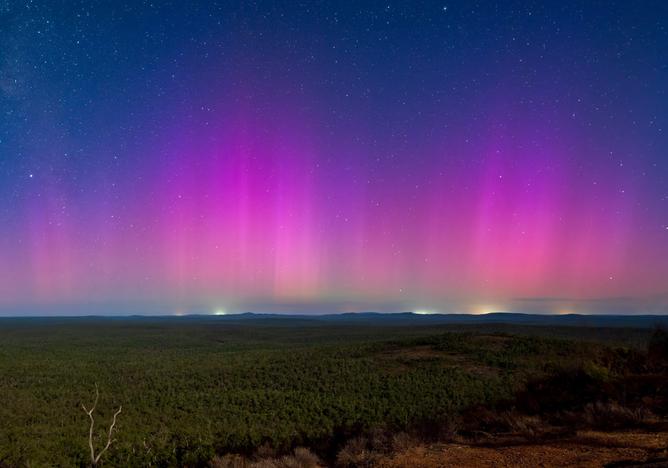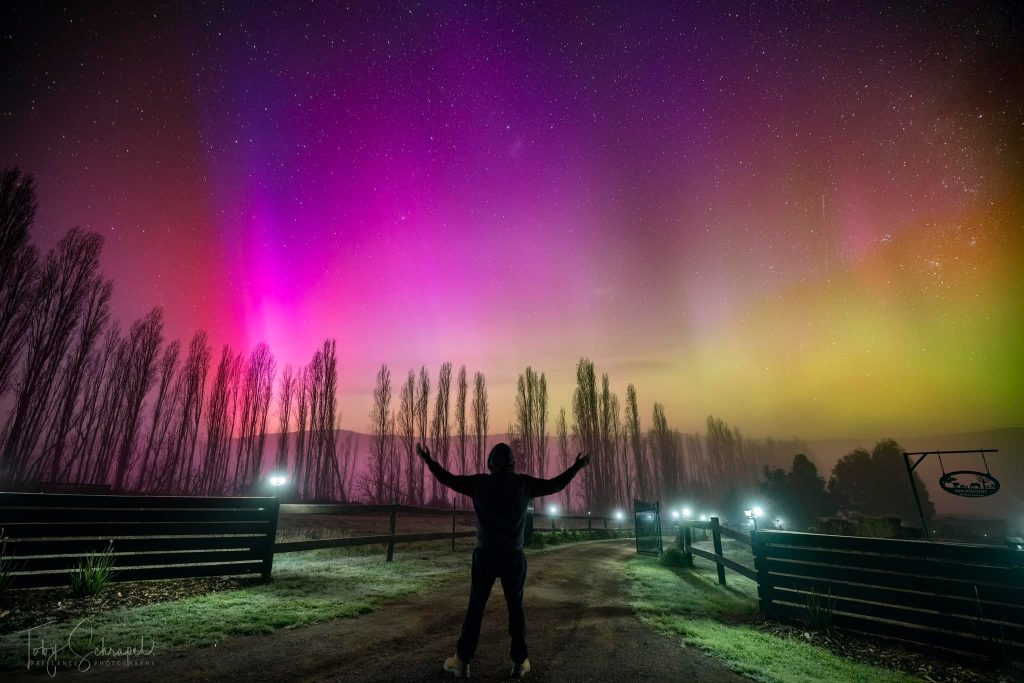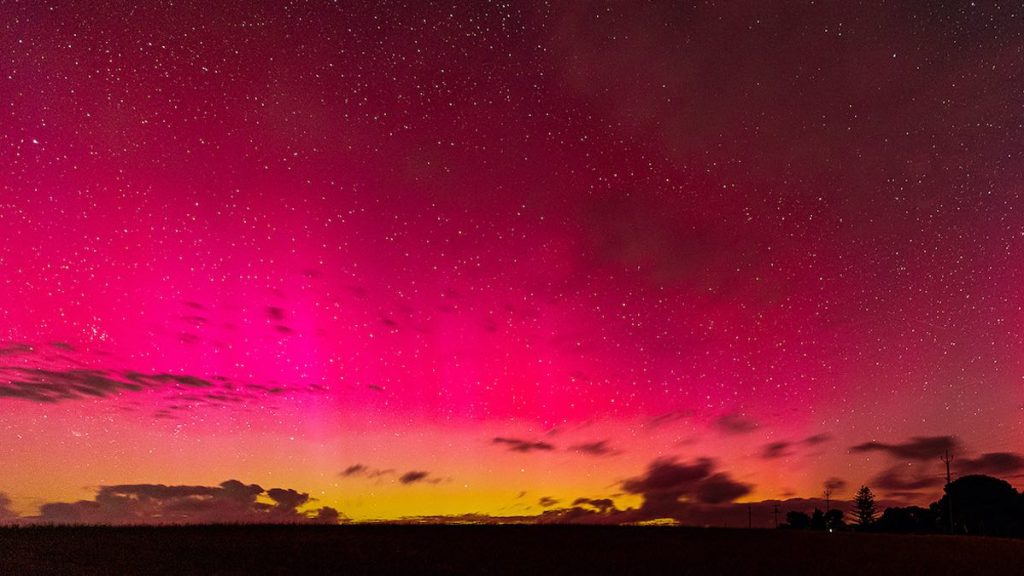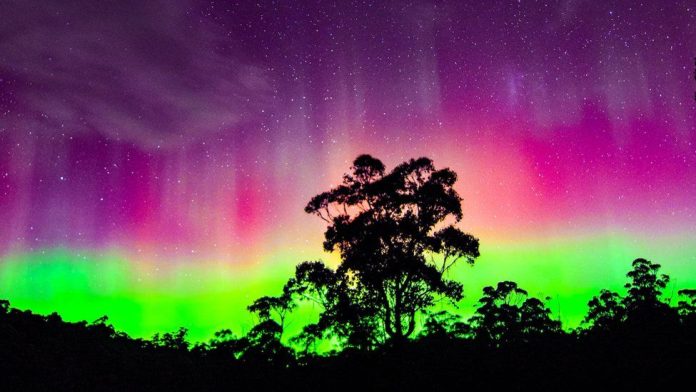The southern skies of Australia recently transformed into a canvas of vibrant colors as the aurora australis, commonly known as the southern lights, put on a mesmerizing show. This celestial spectacle, characterized by hues of pink, green, and blue, unfolded against the backdrop of a rare geomagnetic storm, an event not witnessed in Australia since 2003.
The breathtaking display was ignited by a series of solar phenomena, including sun-emitted plasma and solar flares, which ejected magnetic particles toward Earth in what scientists call “coronal mass ejections.” These charged particles interacted with the Earth’s magnetosphere, resulting in the luminous phenomenon that captivated onlookers across Tasmania, Victoria, and South Australia. However, those residing in New South Wales were unfortunate to miss out on the spectacle due to cloud cover and rain.
Social media platforms flooded with awe-inspiring images and videos capturing the ethereal beauty of the southern lights. From approximately 8 pm to 2 am, lucky spectators were treated to nature’s own light show, a rare occurrence that left many in awe of the wonders of the universe.
For those who missed the celestial extravaganza, there’s still hope. The Australian Space Weather Forecasting Centre has issued a warning of a level G4 geomagnetic storm, the second-highest classification, which may provide another opportunity to witness the aurora tonight across Victoria and South Australia. However, this celestial phenomenon isn’t merely a spectacle for stargazers; it also carries potential implications for critical infrastructure and communication systems.
The Bureau of Meteorology has cautioned that such geomagnetic storms have the potential to disrupt power grids and satellite services, affecting essential communications and high-frequency radio signals. This warning serves as a reminder of the delicate balance between the Earth and the sun, highlighting the need for preparedness and resilience in the face of natural phenomena.
Moreover, the intensity of the aurora may extend beyond the usual southern latitudes, with bright displays potentially visible in areas as far north as Sydney and Perth if G4 conditions persist. This presents a rare opportunity for residents of these regions to witness a celestial phenomenon typically reserved for higher latitudes.
As we marvel at the beauty of the aurora australis, let us also reflect on the fragility of our interconnected world and the resilience needed to navigate the challenges posed by nature. In the dance of charged particles and magnetic fields high above us, there lies a reminder of the awe-inspiring power and beauty of the universe, inviting us to contemplate our place within it.





